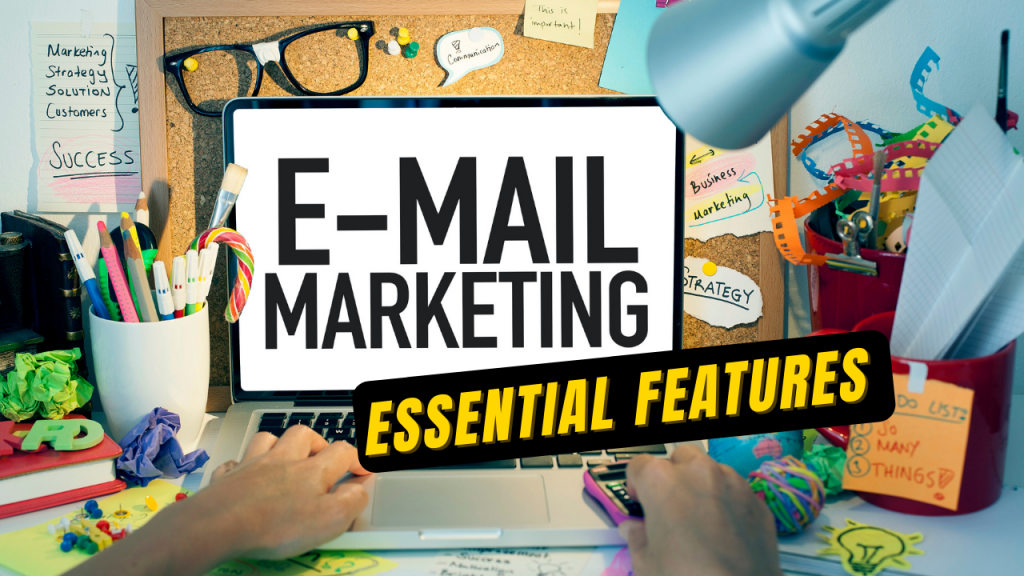
Choosing the Best Email Marketing Platform is important to keep your audience engaged and increase the customer lifetime value by sending targeted messages at the right time of the customer lifecycle.
With the right email marketing software, you can build loyalty, trust, and brand awareness. Enhance your relationship with current and previous customers by sending deals, news, and tidbits to the right people at the right time.
Email is one of the most powerful channels for marketers in 2021, but it’s also among the most competitive. If you’re looking to drive traffic and sales through email campaigns, you’ll need cutting-edge software to automate various tasks and help you work more efficiently.
In this article, we’ll cover some of the most important email marketing features for marketers to look for in 2021. Without these critical tools, you’ll be at a significant disadvantage compared to competitors that are working with a more robust toolkit.
1. Mobile Optimization
More and more users are opening emails on mobile devices every year, and your messages should be just as easy to read on the smaller screen. Failing to optimize for mobile users will have a negative impact on sales and artificially decrease your outreach.
Fortunately, most email marketing platforms automatically optimize messages for smaller screens and provide a variety of templates designed for mobile users. These features allow users to quickly skim emails on smartphones and tablets.
2. Scalable Pricing
If you’re new to email marketing automation, you probably don’t want to break the bank on an enterprise-level plan. Instead, look for a provider that offers multiple subscription tiers and makes it simple for customers to upgrade as they grow.
Whenever possible, try to find a platform with a free trial or money-back guarantee. This will give you the chance to test out their software and see if it matches your needs. You should be particularly careful before committing to a long-term subscription, especially if you haven’t spent much time with the service.
3. Robust Analytics
Contemporary digital marketing is all about data, and different platforms offer more or fewer reporting features. These should start with some of the most fundamental email marketing metrics such as open rate, bounce rate, unsubscribe rate, and click-through rate.
A/B testing is one of the most effective ways to leverage these analytics, and most email marketing services come with built-in testing tools. In fact, some go even further by supporting multivariate tests that compare three or more variants at the same time.
4. Third-party Integrations
Most organizations already use a variety of apps and subscription services, and you want an email marketing platform that fits into your existing tech stack. Of course, the specific integrations to look for will depend on which software your organization uses.
Seamless integrations facilitate everything from audience segmentation and targeting to data reporting and social media messaging. It will take you far more time to perform the same tasks without third-party integrations, so these should be one of your top priorities when looking for a new email marketing service.
5. Customer Service
Hopefully, you won’t run into too many glitches or technical issues when using your email marketing service. With that being said, some providers offer more responsive and more helpful customer service than ever.
If you’re stuck without help from your provider, you may not be able to resolve these problems quickly, slowing down your workflow and having a negative effect on outreach. Try to find a platform that offers live chat support so that you can send a message and receive an immediate response.
6. Marketing Automation
If you’re still running manual email marketing campaigns, you’re missing out on an opportunity to develop much more efficient practices. Email marketing software can help you set up automatic sequences for everything from welcome messages to order confirmation emails.
Some of the best platforms make this even easier with a drag-and-drop interface that allows you to quickly build emails and set them up to send in response to particular actions. Every email that goes out automatically frees up a little more time for you to spend on other areas of your business.
7. Email Surveys
Surveys are an underappreciated tool for digital marketers, and your email marketing platform should streamline the process of writing surveys and sending them to your list. Gathering feedback shows subscribers that you’re interested in their input and provides valuable information that will help you optimize your campaigns.
Without support from your email marketing service, you’ll have to set up surveys manually or look for a standalone survey platform. This is just one more way in which a marketing automation tool can make your life easier and help you stay engaged with your contact list.
8. Suitable Message Limits
Email marketing providers often restrict subscribers to a certain number of messages, and you don’t want that cap to limit your opportunities. If you have 1,000 email subscribers, for example, you’ll probably need a limit of at least 3,000 or 4,000 messages per month.
You should also confirm that your new platform offers an unlimited plan in case you need to scale. You don’t want to be forced to switch providers once your email list reaches a particular size—look for a service that’s ready to grow with your brand.
9. Spam Testing
Spam filters can be a major obstacle to success in email marketing. If your messages are routinely flagged as spam, they won’t even make it to the inbox—instead, they’ll be stuck in the spam folder where they will most likely never be seen or opened.
With spam testing, you’ll be able to identify any content that could trigger spam filters and have a negative effect on your email deliverability. Some providers can test your messages against spam filters from several common clients, ensuring that you aren’t missing any issues that only pop up on a particular email platform. Improving your deliverability will have an immediate effect on open rates, click-through rates, and sales.
Author – Buddira Edirisuriya
